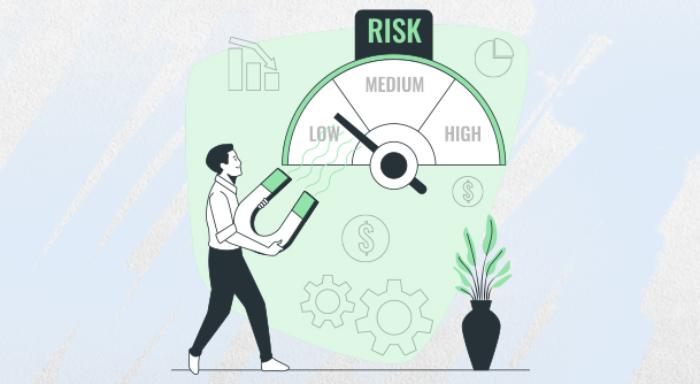Life Insurance or Investment Plan? Why Not Choose Both!
Blog Title
1950 |
8/28/24 6:31 AM |
Life insurance is an essential investment for any person who wants to completely safeguard their family’s future. A life insurance plan ensures that your loved ones are financially covered even in your absence. But for most investors, the greatest downside of a life insurance plan is that its primary benefits are only paid out if the policyholder passes away. On the other hand, investment plans offer returns that can help you fulfil your financial goals and obligations. But investment plans take time to mature, and in the meantime, your family remains financially vulnerable.
So, what happens if you only have the budget for one plan? Do you give up on wealth growth and pick life insurance, or do you secure your finances but give up on protecting your family in case of your untimely passing? How about neither option!
Modern life insurance plans come with various additional benefits, including investment elements that help you grow your wealth over time. With an investment linked life insurance plan, you not only get the security of life cover but also get returns upon maturity of your policy.
How Do Investment Insurance Plans Work?
The premiums you pay for an investment-linked life insurance plan have two primary purposes. First, the premiums act as payment for your life cover, just as in any basic term insurance plan. And second, your premiums also act as investments that grow over time. Once your policy reaches maturity, you not only get back the total premiums paid but also receive returns that are calculated based on the value of your premium instalments.
Plans that include investments and life insurance will specifically mention that they include a ‘savings’ element. With a savings insurance plan, you can ensure your family’s financial protection while also planning for your future monetary goals. Moreover, the rate at which your savings grow depend on the type of plan you have selected. Some plans have guaranteed returns while others have non-guaranteed returns with variable interest rates. Below is a list of all the various types of investment life insurance plans as well as their individual pros and cons.
Savings Insurance Plans with Guaranteed Returns
Savings plans with guaranteed returns are one of the most popular options available in the life insurance sector. When a plan has ‘guaranteed returns’, this means that you know exactly how much money you will be getting back by the end of your policy term. Your returns are calculated based on an ‘Internal Rate of Returns’ or IRR, and this rate is set at the inception of your policy itself. IRR does not change during the policy. For instance, if your IRR was 6% at the start, then expect it to remain 6% even after 10 years.
The primary benefit of a guaranteed plan is that is a low-risk option for conservative investors. There is no variation in the rate of interest, and insurance companies are required by law to pay out the guaranteed amount by policy end (as per regulations set by the Insurance Regulatory and Development Authority of India). However, the major downside of guaranteed plans is that their rate of returns is quite modest in comparison to market-linked rates. Additionally, guaranteed insurance plans can be further categorized into:
Guaranteed Income Plans: Guaranteed income plans give regular payouts during the course of the policy term itself. The amount of money you will get as a payout is predetermined as per your set IRR. Edelweiss Life- Premier Guaranteed STAR is a classic example of a guaranteed income plan.
Returns at Maturity: Plans that payout a lumpsum amount at the very end of the policy term. The lumpsum received is known as the maturity benefit. Edelweiss Life- Guaranteed Income Plan provides a lumpsum benefit at policy maturity.
Non-Guaranteed Plans
Non-guaranteed investment plans have variable interest rates, so you can never accurately predict how much money you’ll get in-hand. This uncertainty makes non-guaranteed insurance plans risker than guaranteed plans. However, the benefit of non-guaranteed insurance plans is that they generally provide higher rate of returns. So, you can expect exponential returns if your plan performs well, but you also must face the risk of loss if your plan underperforms.
Non-guaranteed insurance plans generally come in two variations:
Participating Plans: Plans where your premium is directly invested into the insurance company itself. Meaning that your returns will depend on the performance of your insurance provider. The rate of returns for such plans (known as the bonus rate) is declared each year based on the insurer’s profit margins. If the insurer performs well then, your bonus rate will be higher. But if they underperform then you will also have to face lacklustre returns. Edelweiss Life- Active Income is a participating plan that provides returns according to our bonus declarations.
Unit-Linked Insurance Plans (ULIPs): ULIPs are a combination of life insurance and market-linked investments. Your premiums will be invested into a range of diverse market-linked funds, and your returns will be completely based on the performance of said funds. The market can be highly volatile, but also highly lucrative. This makes ULIPs a high-risk, high-reward investment, with the additional benefit of life cover. Consider investing in Edelweiss Life- Wealth Secure+ if you’re looking for an investment cum insurance plan.
So, Which Investment Plan Should You Choose?
The find your ideal investment plan, you need to first understand your own risk appetite. Are you fine with taking risks and losing a bit of money in exchange for a chance of higher returns? Or do you prefer safer investments that offer modest returns? Your risk tolerance depends on various factors like your age, your family situation, as well as your personal preferences with it comes to risk taking.
If you desire higher returns and are willing to take on some risk, then non-guaranteed plans are the way to go. However, if you dislike uncertainty or are unable to take on high risks, then invest in a guaranteed returns plan.
Aastha Mestry - Portfolio Manager
An Author and a Full-Time Portfolio Manager, Aastha has 6 years of experience working in the Insurance Industry with businesses globally. With a profound interest in traveling, Aastha also loves to blog in her free time.





